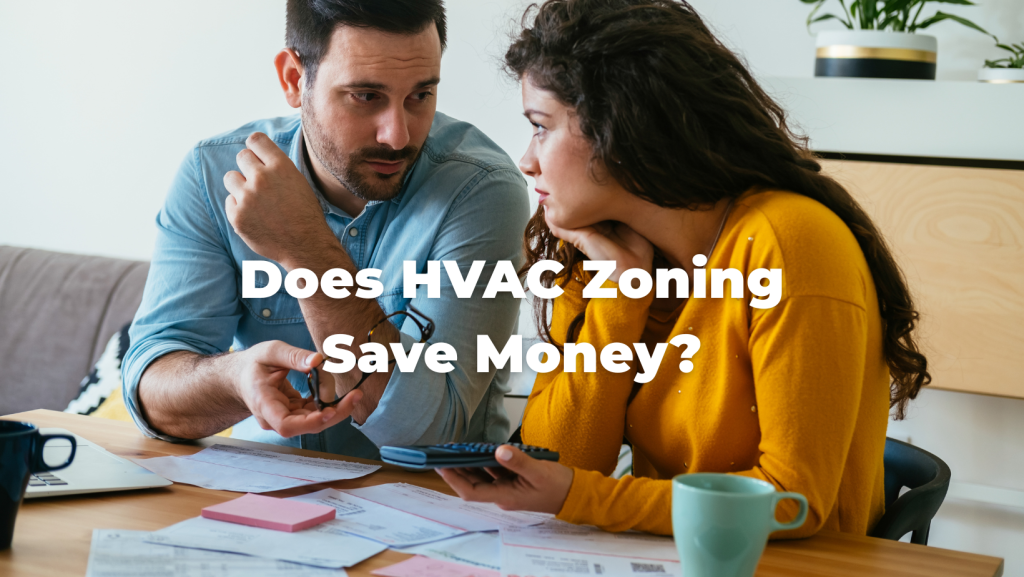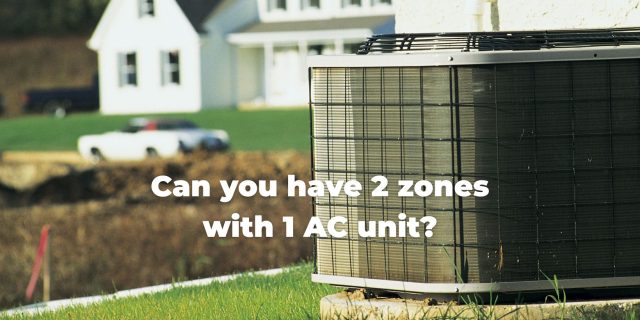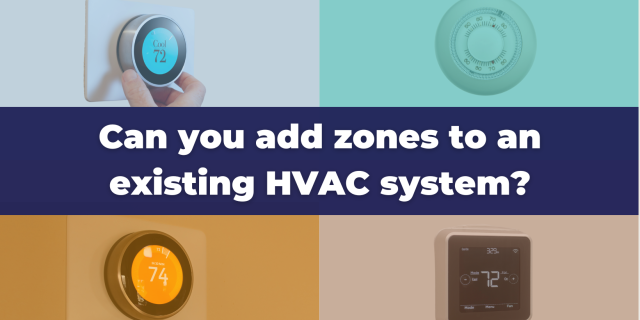
Does HVAC Zoning Save Money?

If you’re like most homeowners, you probably look for ways to save money on energy costs. Does HVAC zoning save money? We’ll explore that question here, so you’ll know what to expect if you decide to install HVAC zoning in your home.
What Is HVAC Zoning?
Let’s start with the basics. When you add zoning to your HVAC system, you are dividing your home into comfort zones. Each zone gets its own thermostat, and you can use the thermostat to adjust the temperature in each area separately.
For example, you might make the first floor a zone, and the second floor another zone. You can now adjust the thermostat for each floor to keep that area where you want it. This can help with homes that tend to have a hot upstairs and a cold downstairs.
There are many ways to configure the zones in your home, and a licensed contractor will help you determine how to make it work for you.
Does HVAC Zoning Help Homeowners Save Money?
Zoning is a tool that gives you more control over the heating and cooling system in your home. Many homeowners use that control to conserve energy and save money on fuel. Others have very specific comfort requirements, and they may not save any money. In fact, it’s possible to spend more money on energy after you install zoning. But if your goal is to cut down on energy costs, HVAC zoning is a great way to get there.
How to Save Money with HVAC Zoning
So how can you use HVAC zoning to not only improve comfort but also save money? Here are our best tips!
Stop Wasting Money to Heat and Cool Unused Areas
One of the best parts about HVAC zoning is that you can avoid heating and cooling areas you aren’t using. When you have just one thermostat in your home, you only get one temperature choice. You’ll have to heat your kitchen all night long, even if no one’s using it. In the summer, you’re cooling the bedrooms all day, even though no one is in them. HVAC zoning gives you control over each area, so you can set the temperature you want when you’re using the room, and save some money when you’re not.
Many of our customers are empty nesters who have a few bedrooms that aren’t being used. They are able to set back the temperature in those rooms so that they aren’t paying for comfort when no one is using the rooms. When the kids come to visit, they can adjust a thermostat to make the rooms comfortable again.
Even if you’re using all the rooms in your home, you are probably not using them all at the same time. Think about your usage patterns, and how you could use zoning to conserve energy when you’re not using a space. For example, you might use the kitchen and living room during the day, and the bedrooms at night. You can program a thermostat to set back the temperature in rooms when you’re not going to be in them. That way, your bedroom can be cold and drafty during winter days, but an hour before bed, it heats up to the perfect temperature. In the same way, your kitchen can be less comfy than you’d like while you’re sleeping, and an hour before you get up, it starts working on the temperature you want.
Focus In On Problem Areas
We get calls almost every day from contractors who are solving specific comfort issues. So we’ve seen it all. Maybe your home has a great room with vaulted ceilings and large windows. It’s never comfortable, right? That’s because a room like that needs extra heat in the winter and extra cooling in the summer. With HVAC zoning, your contractor can make sure that area gets more attention than other areas.
You might be wondering how this works. HVAC zoning systems have dampers in the ductwork that open and close to allow various zones to receive airflow. When a zone needs heating or cooling, the dampers will open and allow air in. Zones that are already comfortable will close their dampers so they don’t get any more airflow. That means we can direct more airflow to the problem area, without making the other parts of the home too hot or too cold.
Other problem areas might have the opposite problem of a great room with large windows. They might be getting too much conditioned air. This happens with finished basements a lot. When you have one thermostat for your whole home, you are going to send heat to your entire home when one room is cold. What’s the problem with that?
Well, some rooms have lots of exposure to the elements. They might have large windows, or be right below an attic that’s not well insulated. They might be next to the front door, which lets in outside air when it opens. These rooms need a lot of help staying comfortable. But your finished basement is very protected. It might not have any windows, and its walls are protected from the elements because they are underground. But the basement is going to get exactly the same amount of heat as the living room.
With zoning, you can direct more heating and cooling to the areas that need it most. You’ll also direct less heating and cooling to areas that don’t need it. So you don’t have to be roasting in your basement just to make the living room comfortable.
The One Thing You Should Never Do
If you want to save money with HVAC zoning, there’s one thing you definitely want to avoid. Don’t create a haven for yourself in one area, while all of the other zones are uncomfortable. It might be tempting on a hot day to say, “I’m going to stay in one bedroom, and the rest of the house can be as hot as it gets.” Then you’re not paying to heat the whole house, right?
Wrong. There are two problems with this idea. One problem is that the one cool bedroom is going to have heat seeping in from all of the other rooms in the house. The outside walls of the home are probably well insulated, but the walls between rooms are not. So if it’s very hot in the next room, your air conditioner is going to have to work extra hard to keep it comfy in the room you’re in.
The other problem is where your air conditioner is getting air to cool. It’s pulling air from intake vents all over your home. If you’re only cooling one room, the air the equipment pulls in will be hot. The air conditioner will have to work harder just to cool that air before it sends it to your cool room.
You can still set back areas you’re not using. Just don’t be too extreme about it. According to the U.S. Department of Energy, you can save as much as 10% a year by turning your thermostat back 7-10 degrees F for 8 hours a day.
Topics
- Energy Efficiency (17)
- Homeowner Tips (19)
- HVAC Zoning (25)
- Indoor Air Quality (2)
- Indoor Comfort (32)
- Uneven Temperatures (5)
Recent Posts
View AllEverybody needs to heat and cool their home, and no one likes to pay for it. Even so, most of us are wasting energy to make our homes comfortable. This guide to HVAC zoning will show you how to avoid this pitfall. At the same time, you’ll get better comfort in your home. Imagine lower […]
Creating Multiple Comfort Zones with One AC Unit Can you have two zones with one AC unit? The answer is a resounding yes. With HVAC zoning, you can transform your home into multiple comfort zones, each tailored to your preferences. Instead of relying on a single thermostat to control the entire house, HVAC zoning uses […]
If you’re like most homeowners, you probably look for ways to save money on energy costs. Does HVAC zoning save money? We’ll explore that question here, so you’ll know what to expect if you decide to install HVAC zoning in your home. What Is HVAC Zoning? Let’s start with the basics. When you add zoning […]
Why many homes are uncomfortable Before we ask, “Can you add zones to your existing HVAC system?” it’s helpful to ask why you’d want to do that. Well, without adding zones, you’re left with just one temperature zone for the entire home. There are several issues with this. One thermostat doesn’t give you much control […]



